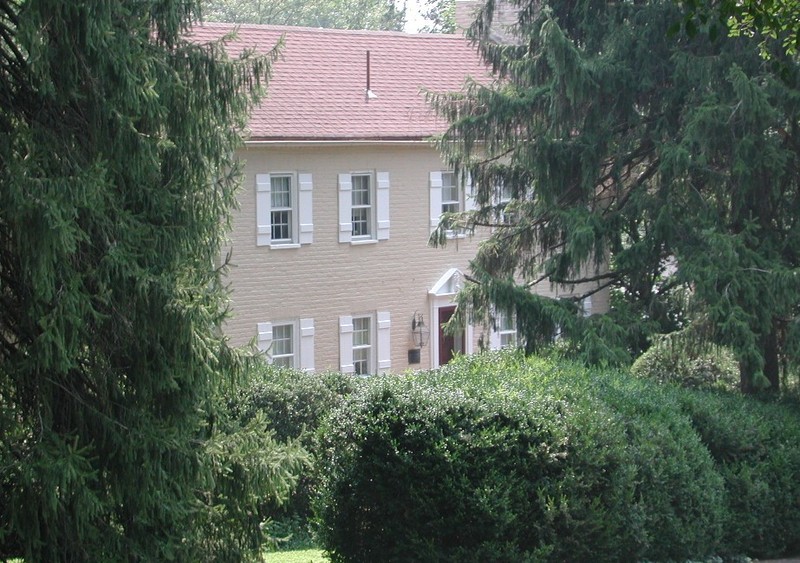Milimar
Introduction
Text-to-speech Audio
Images
Milimar by Jessica Falkenburg, courtesy of Maryland Historical Trust (reproduced under Fair Use)

Backstory and Context
Text-to-speech Audio
The Lazenby family came to North America in 1701 with a large land grant from Charles Calvert, Third Lord Baltimore. In 1723, Robert Lazenby purchased a tract of land called "Wolf's Den" from William Beall, which measured 217 acres. He and his wife Ann Jones Lazenby had a son, Henry Lazenby II (1721-1789), who was named after Anne Arundel County High Sheriff Henry Lazenby (d. 1723). The younger Henry married Margaret F. Beall (1725-1821). He enlisted in the Prince George's County militia in 1748, and in 1760 purchased "Girl's Gift" tract near his father's land. He most likely began building Milimar on this land in the same year.
Milimar's Georgian exterior is Flemish bond on the west-facing front facade with common bond brick on the other sides, with decorative patterns in the brick work. It is five bays long on the front. At the entrance of the property, two seven-foot-high stone gate posts hold a wooden gate on iron hinges. Each end of the house has a chimney. The single-story addition at the rear or east side of the house dates to several decades after the house's construction.
Inside the home, the first floor of the original section contains two rooms separated by a central hallway. The central hall stairway turns at ninety degrees without a landing, and its wooden railing features natural "knee" curves. Fireplaces in the master bedroom and dining room are faced with locally-made soapstone.
An elevated brick terrace wraps around the west and south sides of the house, edged with a double row of boxwood hedges separated by a dry moat. These large hedgerows are interesting examples of early American landscape design. A double row of spruces forms a windbreak along the north side of the structure.
Homeowners Robert D. and Joyce Pullen Barendsen nominated Milimar to the National Register of Historic Places in 1972, and it was recognized in 1973. The house remains privately owned.
Sources
Barendsen, Robert D., and Joyce Pullen Barendsen. Milimar, National Register of Historic Places Inventory -- Nomination Form. July 23rd 1972. Accessed August 28th 2020. https://mht.maryland.gov/secure/medusa/PDF/NR_PDFs/NR-151.pdf.
Haight-Eckert, MaryJane. Henry Lazenby II (1721-1789), Find a Grave. March 13th 2010. Accessed August 29th 2020. https://www.findagrave.com/memorial/49651136/henry-lazenby.
Maryland Department of Assessments and Taxation. Deed to 410 Randolph Road, Silver Spring, Maryland. Deed Reference #/54434/ 00457. August 28, 2020. Search at https://sdat.dat.maryland.gov/RealProperty/Pages/default.aspx
https://mht.maryland.gov/nr/NRDetail.aspx?FROM=NRDBList.aspx&NRID=153&COUNTY=&SEARCHTYPE=locationSearch&PROPNAME=&STREETNAME=&CITYNAME=silver%20spring&KEYWORD=
